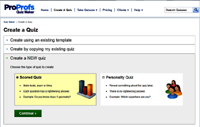How do you like to consume your mobile learning content? Let's ask another question, seemingly unrelated - how do you like your peanut butter, vegetable stew, or dog food? Chunky? I know that’s how I like it. Sure, it’s a texture, but it also connotes other attributes: easy to eat, tasty, and sometimes composed of little bits that are “chunked” together to it bigger and more substantial.
For elearning, chunking can refer to two different things: it can refer to the relatively small size of the content as well as the fact that more granular elements (conceptual or physical) have been incorporated, mixed and formed into “chunks.”
Cognitive psychologists have long been able to demonstrate that one of the best ways to assure that learners are able to make connections and to build on the knowledge and skills they are gaining is to “chunk” the content. Related concepts are clustered together, and they the concepts reinforce each other.
Ideally, the content is place in sequential form, as well, to enable learners to build on their knowledge while they also relate the new concepts or skills to prior learning.
In today’s Bring-Your-Own-Device (BYOD) environment, chunky, bite-size learning works extremely well. You’re able to access content and activities, and then complete assessments. Assessments are automatically graded, and they generate a certificate that reflects your performance. The provider may even keep a record of your performance.
All successful “chunk” learning shares a few elements in common:
Strong, clear conceptual structure: It is important to make sure that the learner understands just where and how the bite-size learning fits within the overall subject. Because the chunk is a piece of the whole, it is important to indicate where and how the content fits within the whole.
Strong overall schemata: Make sure that there are strong classification schemes or categories in your overall course. You may even wish to create a matrix that illustrates where the course fits within the overall subject matter.
Engaging and relevant: Make sure that your learning bites are engaging and relevant. For example, the lesson may be on Leadership through Followership. If so, you will need to make sure it relates to the overall subject of leadership, and it includes engaging, interesting facts, as well as case studies.
Useful: The learner will feel satisfied if it is clear that the knowledge that he or she has gained can be put to use immediately, and can tie to his or her long-term, and short-term goals.
Bite-size “chunk” learning is effective in the mobile learning environment because it simultaneously meets a number of needs. Not only does it provide on-demand knowledge that can help solve an immediate problem, it also creates a sense of accomplishment. Each time a small lesson is completed, the positive outcome reinforces an “I can do it!” attitude, which ultimately ties to enhanced self-efficacy and belief. For those who may feel a bit of anxiety about professional development, chunk learning is a great way to learn the content, build skills, and start to really believe in the transformative power of learning.

.JPG)












